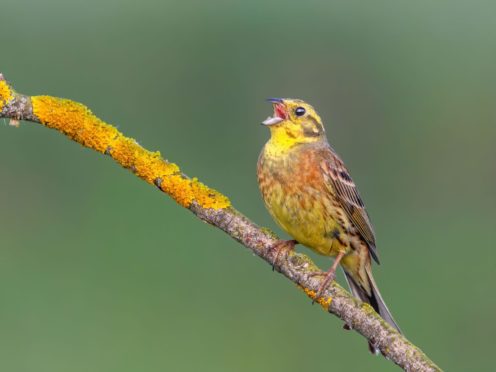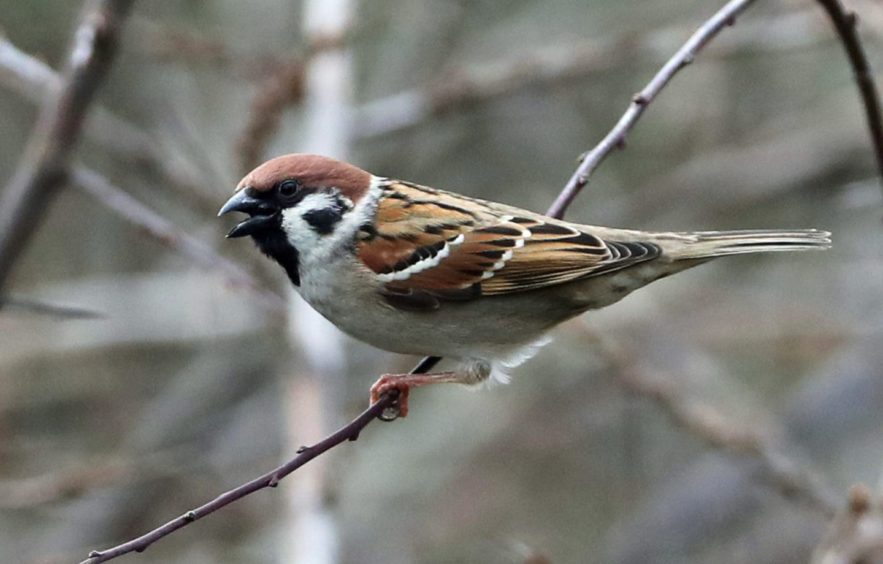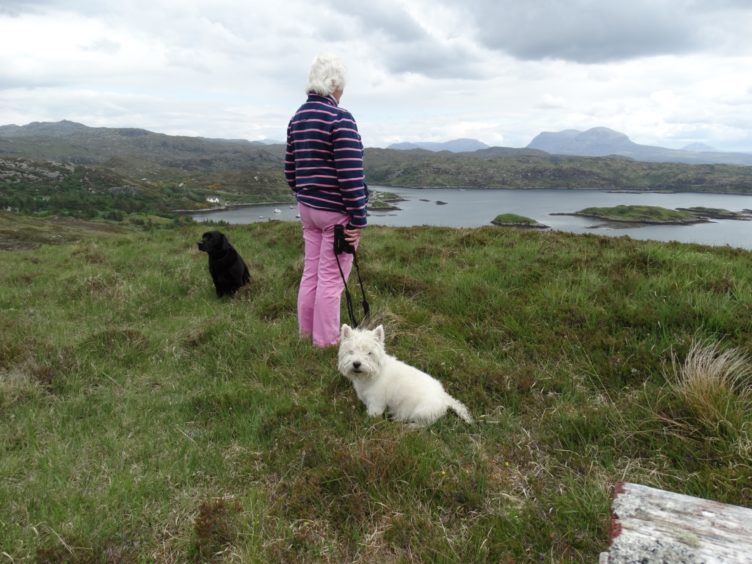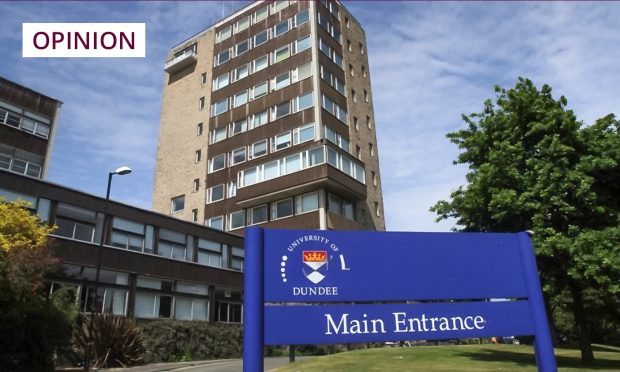I hadn’t seen a yellowhammer for months and one turned up briefly in the garden on Monday to feed on the spillage from the seed feeder.
They are a member of the bunting family, normally farmland birds which will often move into gardens during winter when food is scarce.
The cock bird’s bright yellow plumage – the hen is quite drab by comparison – and its call, traditionally, a-little-bit-of-bread-and-no-cheese, make it unmistakable.

BTO (British Trust for Ornithology) Garden BirdWatch report that this year there have been more frosty nights recorded for the month of April since records began in 1960.
The protracted cold weather may have delayed this bird returning to its breeding grounds.
Their nesting season is April to August, so this one should normally have left the village gardens by now and returned to the open fields where I usually see them when I’m driving round the country roads.
Nesting neighbours
A more regular visitor to the peanuts is a male woodpecker. Both sexes have scarlet rumps but the male has a scarlet crown and nape also.
I hear occasional drumming in the old trees across the road from the house which is probably a cock bird protecting its territory and its hen sitting on eggs.
One of our nesting boxes is occupied by tree sparrows which we see flying in and out of it. There’s some doubt about occupancy of the second box which is obscured by the new foliage of the hawthorn tree, but there’s still time for another sparrow or one of the members of the tit family to take it over.
I took Inka to walk at the Burn Estate which is a favourite haunt of both of us.
The Doyenne and I lived in the Courtyard House, behind the Big Hoose, for six years and Inka spent his first four years there until we moved to our terminal house – if that’s the right expression.
I met a lady anxiously hunting for her Westie which had gone missing. I could sympathise.
Deaf ears
When we lived at The Burn our Macbeth, also a Westie, regularly went walkabout, disappearing into tangled rhododendron bushes, deaf to my pleadings to come back at once, turning to imprecations about what would happen if he didn’t.
When he reckoned I was at my wits end he would pop out with a look on his face that said – “Were you calling”?
I hope the walker was reunited with her Flora before much longer. I have always put great faith in errant dogs returning when their stomachs tell them it is time to be fed.
The burn running past the Burn House, giving the house its name, is shown on the map as the Burn of Kirkton.
I’ve never heard it called by its proper name and I’ve no idea which kirk it is that the burn takes its name from. That’s the thing about place name origins, so often they are lost in the mists of history.
When the house was built in 1796 by General Adam Gordon – who was head of the army in Scotland – he marched French prisoners-of-war from Glencorse Barracks, near Penicuik, up to Edzell to lay out the home policies of his grand new mansion.
They probably got fed better too… I like to imagine history how it might have been
They widened the burn and straightened up its banks, creating a gentle walk for the general’s lady and her friends.
They also built the popular riverside walk through the Blue Door, up past The Loups, and on to the Rocks of Solitude.
It was a better occupation than sitting mouldering in a POW camp – and they probably got fed better too. I don’t know whether that bit is actually true, but I like to imagine history how it might have been.
Spring flowers
At this time of year yellow kingcups or marsh marigolds are flowering in the burn’s shallow water adding a colourful touch of spring to the walk.
Wild primroses are slowly establishing themselves on the banks and some day, probably after our time, there will be a wonderful showing of them every spring.
Hellebores, or Lenten lilies, an early flowering plant, are still in flower behind the Big Hoose. But the Kirrie Dumplings are almost over.
Whatever they may be called in Kelso or Kyle of Lochalsh – in Courier country they are affectionately known as Kirrie Dumplings
I don’t mean we’ve nearly finished eating the dumplings the Doyenne bought at the Kirrie butchers.
These are primula denticulata or Drumstick Primulas, pompoms of lilac florets which provide spring nectar for early flying butterflies and bumble bees.
They don’t look at all like dumplings, more like dandelion clocks or drumsticks. Anyhow, whatever they may be called in Kelso or Kyle of Lochalsh – in Courier country they are affectionately known as Kirrie Dumplings.
So much to see
Gean trees, our Scottish wild cherry, are starting to drop their frothy white blossom. Catkins, or pussy willows, are still on the roadside trees.
In shady woodland banks the solitary and delicately frail wood anemones, or wind flowers, and wood sorrel will have flowered and died by the end of the month – memories for another year.
There’s so much going on out there, but you have to get out into the countryside and look.












